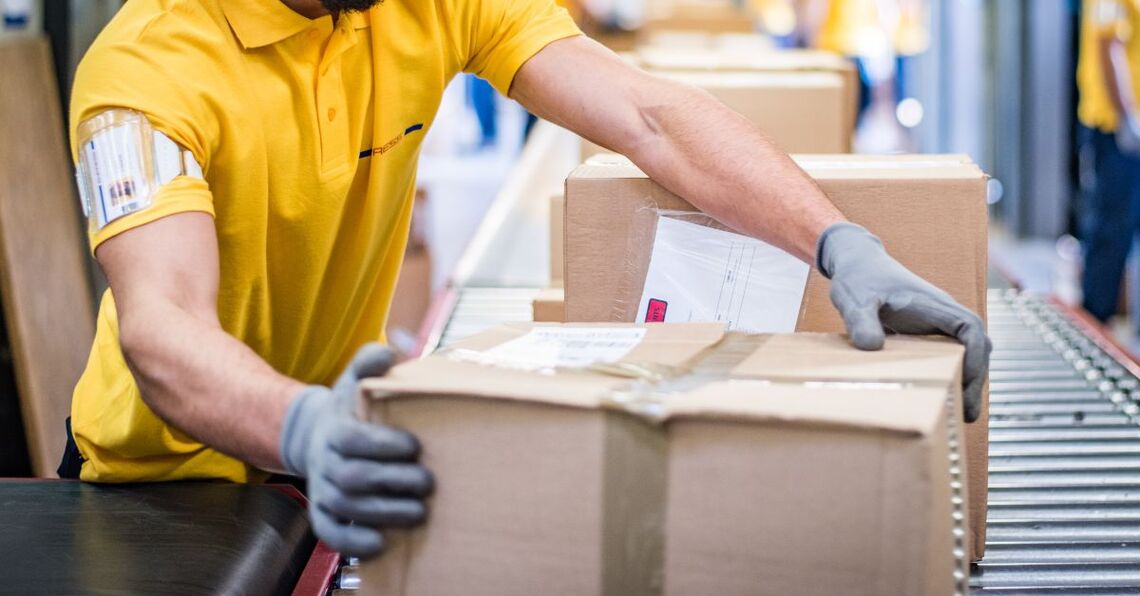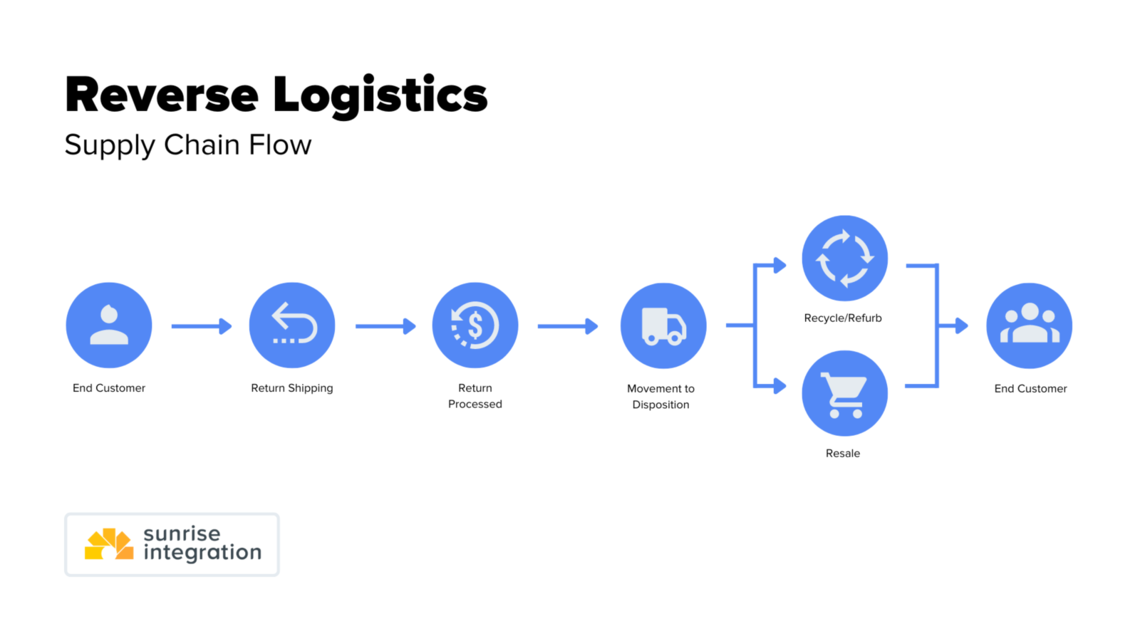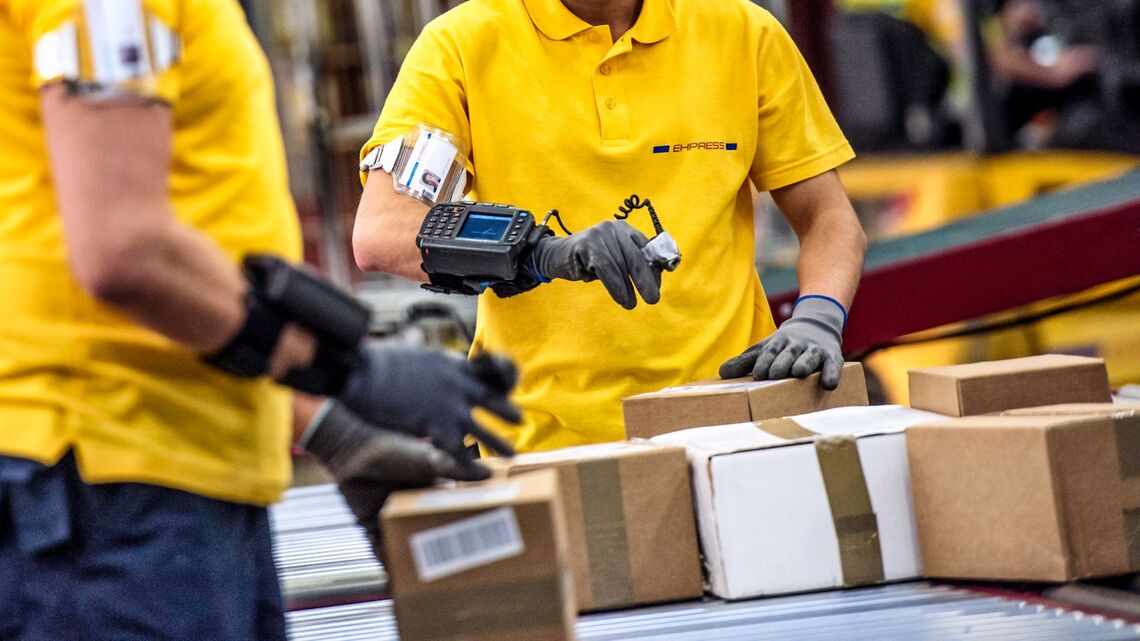Blog
What is Reverse Logistics for Ecommerce and Why You Should Stop Ignoring It
Do you know how optimize the process of products going backward in your supply chain? Let's take a look at reverse logistics!

Do you know how optimize the process of products going backward in your supply chain? Let's take a look at reverse logistics!


June 16th, 2022
Do you know how optimize the process of products going backward in your supply chain? Let's take a look at reverse logistics!
Much of the excitement in working in an ecommerce company is creating a product and getting it to the customer’s door (and hopefully enticing them to come back for more). In an ideal world, that would be the end of the supply chain, but optimizing shipping logistics also includes preparing for returns, resale and defective items.
Reverse logistics is just a fancy way of saying returns or recycling (for refurbishing or remanufacturing). It is the logistics process of returning goods from the customer back to the seller or shipper.
Unfortunately, most businesses tend to focus on their forward supply chain while neglecting their reverse supply chain. As a result, they lack the understanding of how to handle products or parts that come back to them. If it isn’t already, reverse logistics should be a part of your overall business strategy because it greatly impacts the customer experience and your bottom line. Whether the impact is positive or negative is up to you!

Customers return and exchange items for a variety of different reasons such as manufacturer defects, damage, having a change of heart or the item failing to meet expectations. Ideally, you want to minimize the number of returns and exchanges by creating a high quality product and properly describing its features and benefits. However, returns are inevitable in ecommerce–use it as an opportunity to create an easy returns process and policy to increase customer satisfaction and repeat business.
One man’s trash is another man’s treasure. Just because a customer isn’t satisfied with a product doesn’t mean there’s anything wrong with it. In the case where the product works just fine, you want to repackage it and get it right back onto your shelves, virtual or in-person, right away.
This is where the second market also comes into play–and no, we’re not talking about customer-to-customer ecommerce. According to Retail Dive, many retailers are getting involved in the secondhand market, with brands either partnering with resale platforms or launching resale operations in-house. Both Target and Fabletics have tapped ThredUp to implement resale programs. Meanwhile, Urban Outfitters launched Nuuly Thrift, an online re-commerce marketplace. Lululemon has also expanded its resale program nationwide.
Products that have minor defects or flaws don’t need to end up in a landfill either. While you may not get 100% of the profits, you can still add to your bottom line by repairing it and selling it as a refurbished item.
A recall happens when a product has a safety issue or defects that could endanger the customer or put the seller at risk of legal action. While no business wants recalls to happen to their products, sometimes it’s unavoidable. The best way to deal with this situation is to take immediate action by removing the product from your catalog and providing your customers with all the necessary information as well as apologize for any inconveniences. You might want to go even further by offering some sort of compensation or discount on another product. This will show that you’re a trustworthy business that can handle difficult situations in a delicate manner.
Customers are a lot more environmentally conscious now than they were ten, twenty years ago. As a result, practicing sustainability has become a big part of many businesses’ mandates. If a product reaches the end of its useful life, companies can dispose of them in an environmentally friendly way, like hiring a recycling company to collect products, parts and waste and properly dispose of them or reclaiming old products. These two activities are quite common with electronic devices, for example.

Are your policies easy to understand? Do customers often complain about these processes or are they happy with them? How much money are you losing on returns? You should ensure that it’s easy for your customers to return or repair their products, but also focus on keeping costs down.
By collecting data on product returns, you can understand why customers may be returning products. Only then can make adjustments in sales, product design and forward logistics processes accordingly. Some example KPIs include:
Return Rate: Determine how often products are being returned and why. Using this information you can minimize the amount of returns.
Cost per Return or Exchange: If costs are too high, you can find different solutions to reduce this number. For example, charging a small fee for shipping returns.
Total Cost of Repair or Refurbishment: Same thing here–if costs are too high, you should find ways to reduce them.
No Fault Found Rate: This is the percentage of returned items that have no defects. These items are easier to put back in the inventory and sell as open box items or even as new items.
Scrap Rate: This is the percentage of returned products that need to be disposed of or used as scrap. The scrap rate needs to be kept to a minimum as this can be very costly to your business.
Tracking your products will help you make quicker and more informed decisions about what to do with your inventory. To do this, you must sync your inbound and outbound logistics, which helps you avoid data silos.
Your logistics management software and transportation management systems (TMS) should be integrated with supporting systems – including your inventory management system (IMS), POS, and warehouse management system (WMS) – in order to understand where your inventory is, and where it’s needed. If you can track exactly where your reverse inventory is across the supply chain the moment it’s scanned in your sorting center, it will be easy to identify where it should be transferred to get it ready for sale again.
You should also track parts forwards and backwards, not just finished goods. Linking raw materials to the finished good and the customer order allows you to trace ingredients in the event that you need to process recalls—instead of issuing them for entire lines, you can find the issue and selectively issue recalls. Doing this reduces costs and customer dissatisfaction.
With a centralized return center, it’s much easier to sort products and identify the best course of action for each item, thereby efficiently determining how best to reclaim product value. If you’re unable to have a separate returns center, consider dedicating an area of your warehouse or factory to returns.
Make sure to streamline your operations with cloud software. On the business side, you can use an application(s) or software to:
plan efficient pickups
help drivers with delivery routes
sync order numbers
process returns
track asset recovery
manage refurbishment
provide business intelligence analytics
For customers, they should be able to do the following through a website or app:
request returns
receive printable shipping labels
schedule a return or repair
access the returns flow

Our supply chain software experts are knowledgeable in building custom returns portals, automating data returns data tracking and handling single-sku logistics (processing orders that are unique). We’re equipped and ready to help you manage and optimize your reverse logistics digital operations!